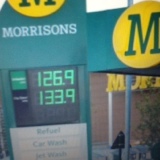Information
-
Site/Area/Zone
-
Conducted on
-
Prepared by
-
Location
DSEAR Risk Assessment
Information
-
Substance Name:
-
Photo (optional)
-
Category (select all that apply)
- Explosive Atmosphere
- Explosive
- Extremely Flammable
- Highly Flammable
- Flammable
- Oxidising
-
Flash point
-
Auto ignition temperature
-
Lower explosive limit
Usage
-
Where is the substance used/generated?
-
Amount used/generated (specify units of measurement)?
-
Amount stored (if applicable) - specify units
-
How is it stored?
-
Substance can be:
-
Specify replacement
-
Measures currently in place
-
Photo of measures in place (optional)
-
List potential ignition source/s (Examples could be an electrical spark caused by connection or disconnection of leads to a battery, naked flame e.g. pilot lights, smoking etc)
-
Employees at risk
-
Relevant operator and/or supervisor training
Risk Assessment
-
In order to assess the risk, select the appropriate items below related to this assessment
Bulk storage of flammable liquids
-
Bulk storage of flammable liquids?
-
Existing control measures:
-
Severity
-
Likelihood
-
Risk rating
-
Actions
Action Number :
-
Details of action
-
Responsible person/s
Flammable liquid storage in containers
-
Flammable liquid storage in containers?
-
Existing control measures?
-
Severity
-
Likelihood
-
Risk rating
-
Actions
Action Number :
-
Details of action
-
Responsible person/s
Hand Painting with flammable liquids
-
Hand Painting with flammable liquids?
-
Existing control measures?
-
Severity
-
Likelihood
-
Risk rating
-
Actions
Action Number :
-
Details of action
-
Responsible person/s
Spraying with the flammable liquids
-
Spraying with the flammable liquids?
-
Existing control measures?
-
Severity
-
Likelihood
-
Risk rating
-
Actions
Action Number :
-
Details of action
-
Responsible person/s
Handling of flammable solids
-
Handling of flammable solids?
-
Existing control measures?
-
Severity
-
Likelihood
-
Risk rating
-
Actions
Action Number :
-
Details of action
-
Responsible person/s
Dust collection system
-
Dust collection system?
-
Existing control measures?
-
Severity
-
Likelihood
-
Risk rating
-
Actions
Action Number :
-
Details of action
-
Responsible person/s
Sources of ignition and hot work
-
Sources of ignition and hot work?
-
Existing control measures?
-
Severity
-
Likelihood
-
Risk rating
-
Actions
Action Number :
-
Details of action
-
Responsible person/s
Gas freeing and inerting
-
Gas freeing and inerting?
-
Existing control measures?
-
Severity
-
Likelihood
-
Risk rating
-
Actions
Action Number :
-
Details of action
-
Responsible person/s
Storage and use of compressed flammable gases
-
Storage and use of compressed flammable gases?
-
Existing control measures?
-
Severity
-
Likelihood
-
Risk rating
-
Actions
Action Number :
-
Details of action
-
Responsible person/s
-
All cylinders are dangerous. The following should never occur:
- The use of gas cylinders as rollers to transport heavy sections.
- Never use direct flame for any heating to raise the pressure of the cylinder.
- Never subject any cylinder to a temperature over 45ºC.
- Never recompress one cylinder from another.
- Never attempt to transfer gases from one cylinder to another.
- Never permit oil, grease or paint or similar substance to come into contact with oxygen cylinder valves.
- Never attempt to repair or modify cylinder valves or devices.
- Never allow electric arc welding tools to come near cylinders.
- Do not allow welding sparks and slag to make contact with cylinders.
- Never use anything but the recommended cylinder valve keys and never attempt to increase the leverage of keys.
- If you suspect that a cylinder valve is damaged, do not attempt to obtain gas from it.
USE OF LPG
The use of the LPG gas, once delivered for use in its gaseous as opposed to liquid form will need to be risk assessed but on the assumption that the delivery mains are to LPG ITA Standards the topic is best risk assessed according to the item of plant that the gaseous LPG is serving. This could be anything from profile cutting machines through to hot mill furnaces or simply space heating.
As with most fixed services it is probably the maintenance element where there will be greatest risk.
Dispensing petrol
-
Dispensing petrol?
-
Existing control measures?
-
Severity
-
Likelihood
-
Risk rating
-
Actions
Action Number :
-
Details of action
-
Responsible person/s
Battery Charging
-
Battery Charging?
-
Existing control measures?
-
Severity
-
Likelihood
-
Risk rating
-
Actions
Action Number :
-
Details of action
-
Responsible person/s
Other Actions
-
Permits to work acquired?
-
Is Zoning required
Completion
-
Recommendations
-
Signature








